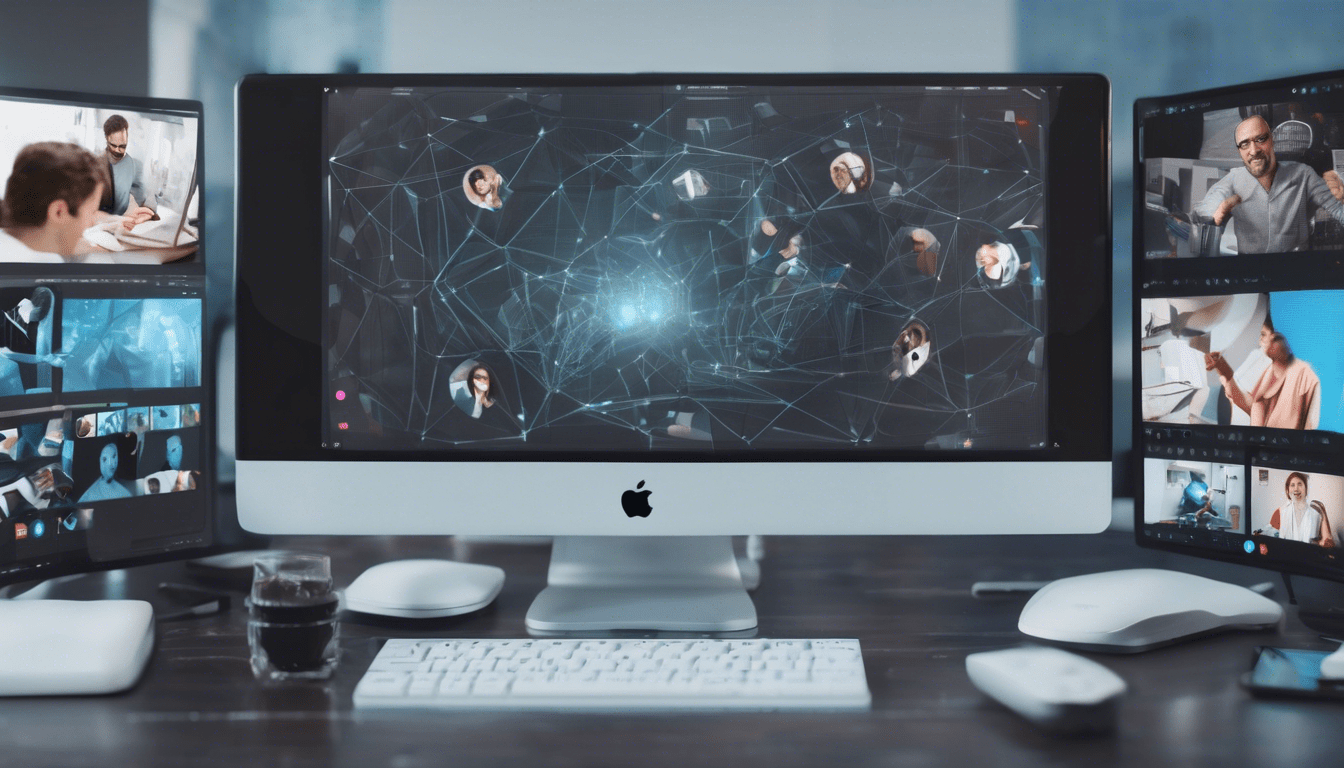Artificial intelligence is transforming video creation from a time-consuming task into an instant, innovative process. With advanced AI tools, creators and marketers can produce high-quality videos rapidly, opening new horizons for content quality and efficiency. This exploration unveils the most powerful AI platforms, comparing features and use cases, and highlights how embracing these tools leads to increased creativity and streamlined workflows—fundamentally changing how we craft visual stories today.
Overview of AI Tools for Instant Video Creation
Artificial intelligence has revolutionized the way we approach video creation, making the process faster and more accessible through advanced AI video creation tools. These tools enable rapid video production by automating tasks that traditionally required extensive manual effort, such as editing, scene selection, and visual enhancement.
Topic to read : Discover how uk startups are transforming high-tech computing
One crucial advantage of AI video creation tools is their ability to analyze content and generate videos almost instantly. This speed is essential for marketers and creators who need to produce engaging media consistently without sacrificing quality. Rapid video production empowers users to focus more on storytelling and strategy while the AI handles technical details.
Top AI video tools share key features that set them apart: intelligent scene composition, seamless text-to-video conversion, and adaptive editing tailored to different platforms. These capabilities not only save time but also enhance the final product’s appeal to diverse audiences.
Have you seen this : How does 5G technology impact computing innovations in the UK?
By adopting AI-driven video solutions, creators benefit from increased efficiency and creative freedom. Marketing teams gain the flexibility to respond quickly to trends and customer demands, ultimately improving engagement rates with minimal resource investment. Embracing these innovative tools is a strategic way to stay competitive in today’s fast-paced digital landscape. For those ready to explore this transformative approach, get started with AI video today.
Leading AI Video Creation Platforms
Explore how innovative tools are transforming video production
When it comes to top AI video platforms, their core strength lies in offering advanced video automation tools that drastically reduce production time while enhancing output quality. These platforms leverage AI to streamline every stage from scripting through editing to final rendering, making professional video creation accessible to a broader audience.
AI-driven video automation tools provide capabilities such as automatic scene detection, voice synthesis, and real-time editing suggestions. These functions help users produce engaging videos quickly without needing extensive technical skills. By integrating with popular content management systems and social media channels, these platforms facilitate seamless workflows from creation to distribution.
Incorporating user-friendly interfaces ensures even beginners can navigate complex features efficiently, reducing learning curves. Additionally, many platforms support collaborative environments, enabling teams to work jointly on projects with version control and synchronized editing. Collectively, these video automation tools cater to diverse needs—from marketers seeking quick promotional clips to educators crafting interactive lessons—maximizing creativity and productivity.
Comparative Analysis of AI Video Tools
When conducting a video creation comparison, it’s essential to evaluate AI video tools side-by-side to understand their unique features, strengths, and limitations. Each AI platform offers distinct functionalities that can greatly affect the outcome of your projects, depending on your specific needs and budget.
A thorough AI tool evaluation begins with examining core features such as ease of use, customization options, output quality, and speed of video generation. For instance, some tools excel in automated script-to-video generation while others provide more flexibility in manual editing and enhancing creative control.
Considering the cost-benefit analysis, the price of an AI video tool should align with the value it provides for your project. An inexpensive platform might limit customization or output resolution, impacting the professional quality of your videos. Conversely, premium tools often include advanced features like multi-language support or integration with other creative workflows, which can justify higher costs for commercial projects.
In summary, a detailed video creation comparison requires balancing performance capabilities against budget constraints. This strategic approach ensures that you select an AI video tool that delivers optimal results while fitting your project requirements. To begin exploring these options and their practical applications, you can get started with AI video today.
Use Cases & Practical Applications of AI Video Tools
AI video use cases span across diverse fields, offering remarkable content innovation. One major application is rapid content production for social media campaigns. Marketers leverage AI video tools to quickly generate engaging videos tailored to various platforms, accelerating campaign deployment and maximizing audience reach. These tools can automate editing, generate captions, and even create custom visuals, significantly reducing manual effort.
Educational content creation also greatly benefits from AI. By streamlining video creation, educators can produce personalized, interactive lessons that cater to different learning styles. AI-generated scripts and visuals enhance clarity and engagement, making complex topics easier to understand. This practical application helps educators save time while improving knowledge transfer.
Storytelling is another area transformed by AI video tools. They enrich narratives by generating compelling visuals and scripting, allowing creators to bring their ideas to life more vividly. This not only boosts creativity but also opens new possibilities in media production, advertising, and entertainment. These AI video use cases demonstrate how the technology drives innovation and efficiency across industries.
How AI Enhances Creativity and Efficiency in Video Production
AI benefits in video creation are transforming how content is made, significantly reducing production time while optimizing resource allocation. By automating repetitive tasks such as editing, color correction, and even generating narration, AI allows creators to focus more on the artistic vision rather than technical details. This results in faster turnaround times without compromising quality.
Creative enhancement through AI also empowers non-experts to produce professional-quality videos. Tools employing AI-driven templates and scene suggestions guide users through the process, simplifying complex workflows. This democratization means anyone, regardless of prior experience, can confidently create engaging content that meets industry standards.
Innovative features like AI-generated narration add an additional dimension to video projects, offering natural-sounding voiceovers without needing voice actors or extensive recording setups. Scene suggestions adapt dynamically to the content, enhancing storytelling by proposing optimal cuts, transitions, and effects tailored to the narrative context.
Together, these advancements clearly demonstrate how AI benefits in video creation not only streamline production but also unlock new levels of creativity. For those looking to explore this transformative technology, get started with AI video today and discover how it can elevate your video-making process.
Tips for Selecting the Right AI Video Tool
Choosing the best AI video software can be a game-changer for content creators and businesses aiming to streamline video production.
First, assessing compatibility with existing workflows is critical. Before committing to any AI video software, evaluate how well it integrates with your current tools and platforms. Compatibility ensures a smoother transition and prevents disruptions. For example, if your team uses a particular editing suite or cloud storage solution, choose AI video software that supports these environments to maintain productivity.
Next, prioritizing features based on project goals empowers you to select software tailored to your specific needs. Are you after instant video generation for marketing campaigns, or do you require advanced customization? Focus on key features like automated editing, text-to-video capabilities, or asset libraries. Prioritizing features helps avoid paying for unnecessary functionalities while ensuring the software supports your creative vision.
Lastly, considering scalability and future updates is essential for long-term success. As your projects and teams grow, your AI video software should adapt and expand. Look for tools that offer regular updates and new features aligned with evolving AI technologies. Scalability ensures that your investment remains valuable as demands increase or shift.
Future Trends in AI Video Technology
A glimpse into the evolving landscape
The field of AI video technology is rapidly advancing, shaping the way we create and experience visual content. Among the most significant emerging AI video trends is real-time editing and personalization. This innovation enables creators to adjust video content instantly, tailoring it to individual viewer preferences or situational contexts. For example, AI can modify scenes, dialogue, or even visual effects on the fly, enhancing engagement and relevance.
Another promising future innovation is the seamless integration of AI with virtual reality (VR) and augmented reality (AR). AI-powered videos are increasingly becoming interactive worlds where users can explore immersive environments or overlay virtual elements onto real scenes. This blend allows for not only storytelling but also practical applications such as virtual training and experiential marketing.
The ongoing evolution of AI models further revolutionizes the content creation landscape. More sophisticated algorithms improve video synthesis, automatic editing, and creative decision-making, reducing the need for manual work while increasing creative possibilities. These trends point towards a future where AI not only assists but also co-creates with human artists, pushing the boundaries of what video production can achieve.
To start exploring these transformative AI video tools and capabilities, you can get started with AI video today.
References and Further Resources
When diving into AI video resources, it is crucial to access a range of expert opinions and industry insights that can deepen your understanding and guide effective implementation. Comprehensive industry reports offer detailed analyses of current trends and technological advancements, helping you stay informed about the evolving landscape of AI video generation.
Many valuable materials include tutorials that break down complex processes into manageable steps, ideal for both beginners and seasoned professionals. These guides provide practical insights on best practices, enhancing your ability to leverage AI video tools efficiently. By consulting multiple sources, you can compare perspectives and gain a well-rounded view of the technology’s capabilities and limitations.
For researchers and practitioners alike, referencing expert reviews and in-depth analyses contributes to making informed decisions. Industry reports often incorporate case studies and data-driven evaluations, essential for understanding the real-world impact of AI video applications.
To explore this field further and begin creating AI-powered videos with ease, consider getting started with AI video today. This approach ensures you have the foundational knowledge combined with actionable tools to harness AI’s potential effectively.





